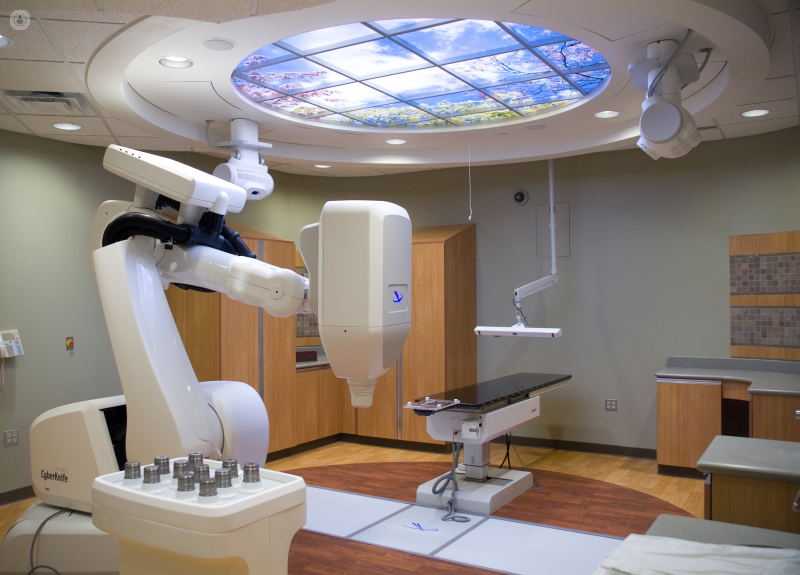


What is CyberKnife?
CyberKnife is a robotics system for performing radiotherapy invented by American neurosurgeon John R. Adler. It is unique due to its precision when treating tumours, allowing higher doses of radiation to be accurately delivered to the tumour, while minimising damage to the surrounding tissue and requiring fewer treatment sessions than conventional radiotherapy.
What is CyberKnife for?
CyberKnife is used to treat several kinds of tumours, such as brain tumour, malignant meningioma, lung cancer, prostate cancer or other conditions which would be very difficult to treat with traditional means (trigeminal neuralgia, epilepsy, spinal injury).
How does CyberKnife work?
The system combines a robotic arm with a linear accelerator, generating a beam of high-energy, extremely targeted ionising radiation. It is also equipped with an image guidance system and two X-ray imaging cameras.
How can I prepare for it?
If you have to have a CyberKnife treatment, you may have to undergo different preparation stages based on your condition:
- If you have an intracranial condition, your head will be kept still by a non-invasive thermoplastic mask shaped on your face. That will help keep your face still during the procedure
- If you have an extracranial condition, the reference point for the system will be your spine.
You may have to have a CT scan and an MRI of the affected area, as well as other tests to determine how big the mass that needs to be treated is and which neighbouring organs have to be excluded from the treatment. After these exams, the radiotherapist will be able to set up the radiosurgery session, programming the CyberKnife system.
What does it feel like during the procedure?
The treatment consists of receiving beams of radiation on the area you need to treat. You will be placed in a manner that allows the system to correctly identify which area it needs to work on. The treatment is completely painless. You won’t need any anaesthesia. Each session usually lasts 60 minutes.
